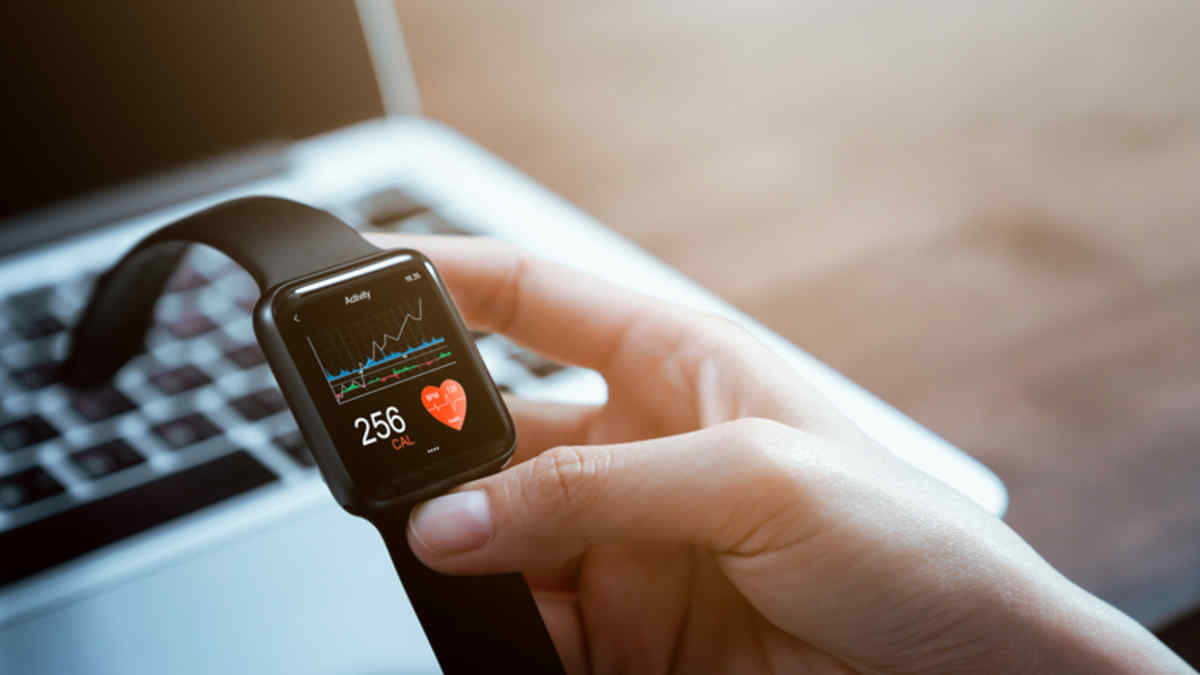In an era of hyper-connectivity, wearable technology has evolved far beyond a simple fitness tracker for counting steps. These sophisticated devices, from smartwatches and smart rings to connected patches and even smart clothing, are now powerful tools for monitoring, understanding, and proactively managing our health in real time. They represent a fundamental shift in how we approach wellness, moving from reactive visits to the doctor to a continuous, data-driven model of self-awareness. This comprehensive guide will explore the revolutionary applications of wearable tech in various aspects of health, the underlying biometric data they collect, and the exciting possibilities that lie ahead for a more personalized and proactive future of healthcare. We are entering a world where our health is no longer a mystery but a story told by the data on our wrists.
The Evolution of Wearable Technology
![]()
The journey of wearable tech from a niche gadget to a mainstream health device has been driven by a confluence of technological advancements and a growing consumer demand for personalized health insights.
A. From Step Counter to Health Monitor: The early days of wearables were dominated by simple step counters. These devices provided a basic metric for physical activity but offered little in the way of comprehensive health data. Today, however, a modern smartwatch is a sophisticated health monitor, capable of tracking a wide array of biometric data.
B. The Power of Miniaturization: The miniaturization of sensors and processors has made it possible to embed powerful technology into discreet and comfortable devices. This has led to the development of smart rings, patches, and clothing that can collect data without disrupting a person’s daily life.
C. The Rise of Health-Focused Apps: The true power of wearables lies in the software. Health-focused apps, often integrated with a wearable device, can analyze the raw data and provide users with actionable insights. For example, an app might not just tell you your heart rate; it might use that data to tell you that your stress levels are elevated and guide you through a breathing exercise.
D. Integration with the Healthcare Ecosystem: Wearables are no longer isolated devices. They are becoming integrated with the broader healthcare ecosystem, with the ability to share data with doctors, physical therapists, and other medical professionals. This allows for a more holistic and informed approach to patient care, bridging the gap between clinical visits.
E. Data-Driven Self-Awareness: The constant stream of data from wearables empowers individuals with a new level of self-awareness. It allows them to see the direct impact of their daily choices—from the food they eat to the amount of sleep they get—on their overall health. This information is a powerful motivator for making positive and sustainable lifestyle changes.
Key Biometric Data and Their Health Implications
The heart of wearable technology is the biometric data it collects. Each data point tells a different part of the story of our health.
A. Heart Rate and Heart Rate Variability (HRV):
* Heart Rate: A basic but crucial metric. A resting heart rate can be an indicator of overall cardiovascular fitness. A low resting heart rate is often a sign of good cardiovascular health, while a high one can be an indicator of stress or illness.
* Heart Rate Variability (HRV): This is a more advanced and powerful metric. HRV measures the variation in time between each heartbeat. A high HRV is associated with a resilient and well-regulated nervous system, while a low HRV can be a sign of chronic stress, poor sleep, or an impending illness. It is a powerful tool for understanding our body’s stress response.
B. Sleep Tracking: Sleep is a cornerstone of both physical and mental health. Wearables can track the different stages of sleep—light, deep, and REM—providing a detailed analysis of our sleep quality. This data can help users identify patterns, understand the impact of their daily activities on their sleep, and make informed changes to their sleep hygiene.
C. Blood Oxygen (SpO2): Many modern smartwatches and wearables can now measure blood oxygen saturation. A healthy SpO2 level is a good indicator of lung and circulatory health. A consistently low reading could be a sign of an underlying health condition, such as sleep apnea.
D. Skin Temperature: Our skin temperature can be an indicator of a variety of physiological states. A change in baseline temperature can be a sign of illness, stress, or a change in a woman’s menstrual cycle. Some advanced wearables can track a user’s skin temperature throughout the night, providing valuable insights into their overall health.
E. Electrodermal Activity (EDA): This metric, also known as galvanic skin response, measures minute changes in sweat gland activity on the skin. EDA is a powerful proxy for emotional arousal and stress. By tracking EDA, some wearables can provide real-time alerts when a user’s stress levels are rising, prompting them to take a moment to breathe or meditate.
F. ECG (Electrocardiogram): Some smartwatches now have the capability to take a single-lead ECG, which can detect signs of an irregular heart rhythm like atrial fibrillation. While not a substitute for a clinical ECG, this feature can be a powerful tool for early detection and for alerting users to seek medical attention.
Revolutionary Applications in Health and Wellness

The data collected by wearable tech is being used in a variety of revolutionary ways to improve our health.
A. Proactive Health Management: Wearables are moving us away from a reactive model of care. By providing continuous data, they can alert users to potential health issues before they become serious. For example, a wearable might detect a consistently high heart rate or a low blood oxygen level and recommend that the user consult a doctor.
B. Chronic Disease Management: For patients with chronic conditions like diabetes, hypertension, or heart disease, wearables can be a game-changer. They can continuously monitor key metrics and provide a stream of data to a doctor, allowing for more timely and informed interventions. This can lead to better outcomes and a reduced risk of complications.
C. Mental Wellness and Stress Reduction: Wearables are becoming powerful tools for mental health. By tracking metrics like HRV and EDA, they can provide objective data on a person’s stress levels. This data can be used to trigger guided breathing exercises, mindfulness meditations, and other stress-reduction techniques.
D. Rehabilitation and Physical Therapy: For patients recovering from an injury or surgery, wearables can be used to track their progress and ensure they are adhering to their physical therapy plan. The data can be shared with a physical therapist, who can use it to make more informed adjustments to the treatment plan.
E. Women’s Health: Wearables are providing women with a new level of insight into their health. By tracking metrics like skin temperature and heart rate, some wearables can predict a woman’s menstrual cycle and ovulation window. This data can be a powerful tool for family planning and for understanding the impact of hormonal changes on overall health.
F. Sleep and Recovery Coaching: The next generation of wearables will not just track sleep; they will provide personalized coaching based on the data. An app might use your sleep data and your activity level from the previous day to recommend the optimal time to go to bed or the best wind-down routine for you.
Challenges and The Road Ahead
Despite the immense potential, the widespread adoption of wearable tech in healthcare is not without challenges and ethical considerations.
A. Data Accuracy and Clinical Validation: While the accuracy of consumer-grade wearables has improved dramatically, they are not always on par with medical-grade devices. It’s crucial for the industry to strive for greater accuracy and for the public to understand the difference between a wellness device and a medical device.
B. Data Privacy and Security: The data collected by these devices is incredibly personal and sensitive. Ensuring the security and privacy of this data is paramount. Robust regulations and transparent privacy policies are essential to build and maintain user trust.
C. The Risk of Over-Quantification: There is a risk that the constant tracking of health metrics could lead to a new form of anxiety—the anxiety of not meeting one’s health goals. It’s important for wearables to be a supportive tool, not a source of pressure or a constant reminder of perceived shortcomings.
D. Regulatory Frameworks: The line between a consumer wellness device and a medical device is becoming increasingly blurred. This presents a challenge for regulators. Clear regulatory frameworks are needed to ensure that wearables that make medical claims are safe and effective.
E. Interoperability: For wearable data to be truly useful, it needs to be integrated with a person’s electronic health record (EHR). Achieving interoperability between different devices and different healthcare systems is a major technical challenge.
Conclusion
Wearable technology has moved beyond a simple gadget and is now a central pillar of the new digital health ecosystem. By providing a continuous stream of biometric data, these devices are empowering individuals with a new level of self-awareness and control over their health. They are moving us away from a reactive model of healthcare and towards a proactive one, where we can identify potential issues and make informed decisions about our well-being long before they become serious.
The benefits of this revolution are profound and far-reaching, from more effective chronic disease management and mental wellness support to a new level of insight into women’s health and physical recovery. However, as we embrace this technology, it is crucial that we do so with a clear understanding of the challenges and ethical considerations. Data privacy, accuracy, and the risk of over-quantification are not insignificant issues. They require a collaborative effort from the technology industry, healthcare professionals, and regulatory bodies to ensure that these tools are used responsibly and for the benefit of all. The future of health is a future where our technology works in harmony with our bodies, providing us with the insights we need to live longer, healthier, and more vibrant lives. The revolution has begun, and it’s on your wrist.









Discussion about this post